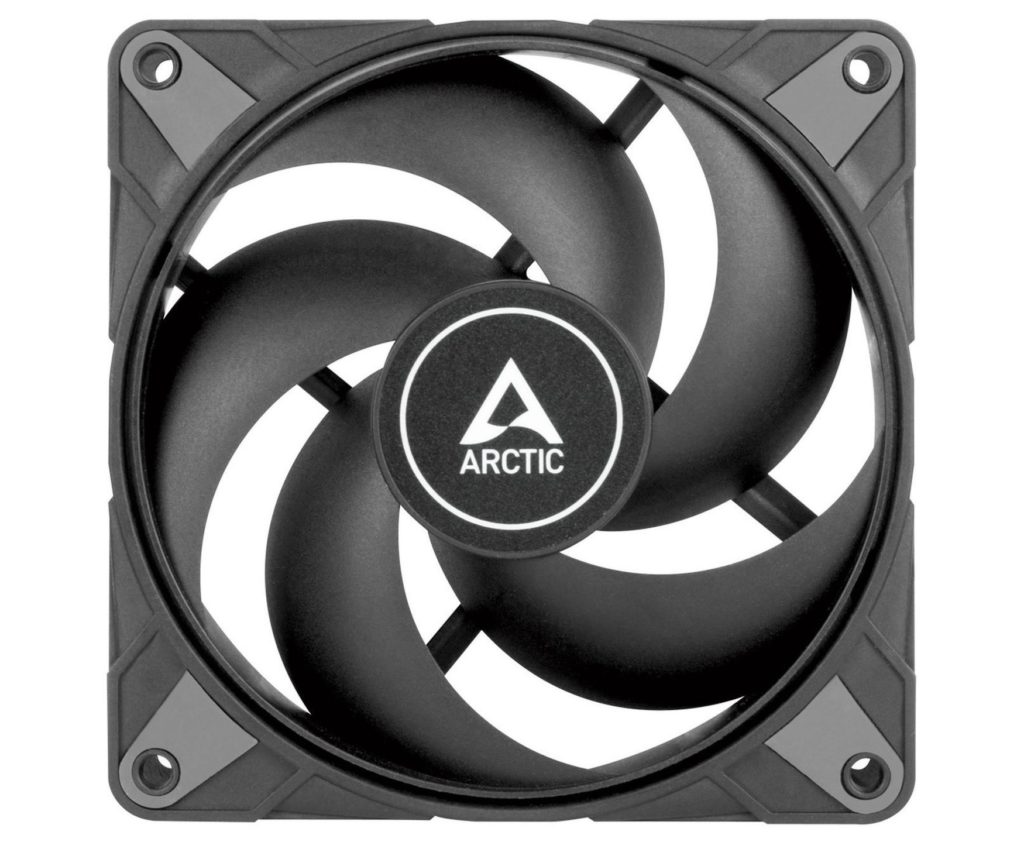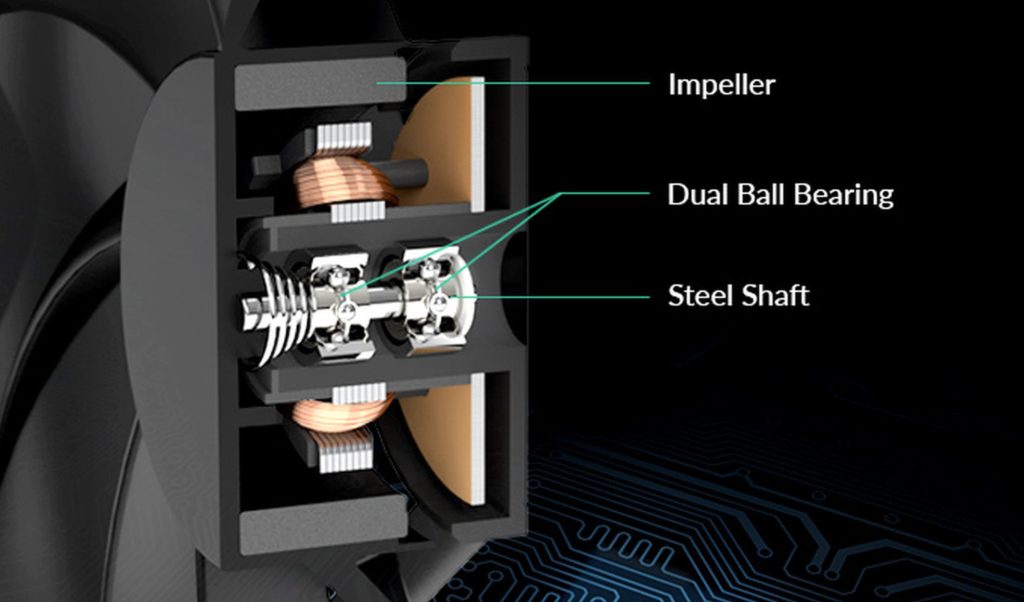Arctic P12 Max
Arctic has released a successor to the P12 fan, or perhaps more likely a higher-end model of it, as the P12 Max is a bit more expensive. That’s because it has a significantly more sophisticated design that addresses the shortcomings of the P12. In particular, the P12 Max has stiffened blades to counteract the high vibration of Arctic’s 5-blade rotors, and also, it will be one of the most powerful 120mm fans due to its significantly increased speed.
Following the P12 A-RGB pattern, Arctic also lines the rotors of the unlighted P12 Max fans with a circular hoop. This is the key modification that sets the new Arctic P12 Max fan apart from the P12.
The reason why such a feature (the circular hoop) is important with the shape of Arctic’s “P” fans is very simple. Both the P12 fan and the P120 models have only five blades, which there is nothing wrong with, but if they are to operate in a cross-section corresponding to the 120mm format, they need to be excessively long. Combined with the commonly used material (PBT) in this price range, the blade tips are too flexible, leading to quite high vibrations. This can also be seen with the BioniX P120 A-RGB fan.
These vibrations are not only a source of secondary noise (e.g. by resonating the case on which they are mounted), but they also escalate the resonant frequencies of the sound. The fans are thus excessively noisy at lower (rumbly) frequencies. However, the use of hoops stiffens the rotor blade tips, which suppresses the unwanted vibrations, and with them the peaks at the “critical” sound frequencies drop. In simplistic terms, it could be noted that such a fan will be more acoustically pleasing.

By implementing the hoop, Arctic not only achieves an acoustic improvement, but also that the air streams will not tear away from the blade tips (as on the same rotors, but without the hoop), thus achieving higher static pressure and airflow through obstacles. However, you won’t be able to find out how much of an improvement this might be from the official specs for the Arctic fan, as the P12 Max’s speed is significantly increased. That’s as high as 3300 rpm. Because of that as well, the stiffening hoop “had to come”, because at such a high speed the vibrations would already be really extremely intense.
Hand in hand with the higher speed, the motor power is also higher, and the internal cross-section of the rotor (the cross-section away from the blade axis) has also increased. This means that the outer cross-section with the blades is slightly smaller. This is a small “minus” in terms of efficiency, or airflow to noise ratio, but is likely to be far outweighed by the other improvements and ultimately result in a more aerodynamically efficient fan compared to the older P12 and P120 models. You’ll find out by how much and in which situations in our tests.
Despite the high maximum speed, the minimum speed (200 rpm) is very low with the motor shutting down below 5% PWM duty cycle. The Arctic P12 max fan therefore supports semi-passive operation. Compared to the P12, the P12 Max also has different bearings. Instead of fluid bearings (FDB), “dual” ball bearings are used (i.e. with a set of balls in two rows). However, the mean time between failures (MTBF) is not specified by Arctic. What we do know, however, are the parameters regarding airflow and static pressure.
The airflow is supposed to be 137.69 m³/h, with which it could be ranked between the BeQuiet! Silent Wings Pro 4 (BL098) and the Akasa OTTO SF12. The stated static pressure is also high – 4.35 mm H20. These parameters, of course, correspond to the maximum speed at 3300 rpm.
The P12 Max fan is already in stores all over the world and in relatively high quantities. Production-wise and logistically, Arctic seems to have managed it well. The price starts at around 10 EUR, roughly double the price of the P12.
English translation and edit by Jozef Dudáš
- Contents
- Arctic P12 Max













the best fans price/performance ratio, I ordered a couple for only $9 and $16 with customs taxes, lets se how my temps goes.
So I read in some reviews and videos some got a loud fan even at lower RPM and even heard humming noise too. Is it a bad batch or not? Can you ask Arctic about it?
Thank you for the question. Let’s see how the P12 Max will do in our tests. If we come across something that we believe is related to a manufacturing defect, we will definitely consult with Arctic.